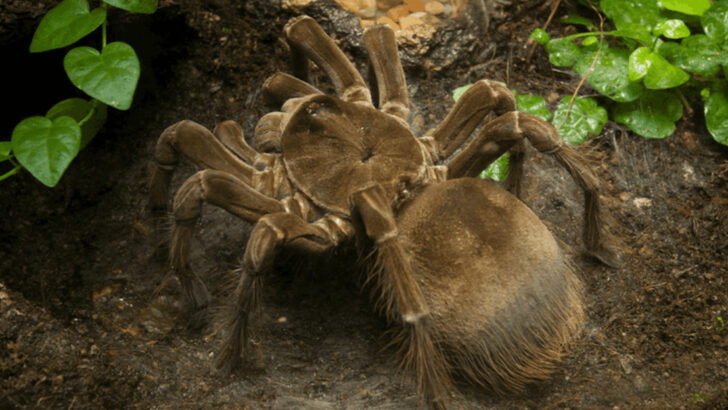This spider is so big it can cover a dinner plate—legs, fangs, and all.
The Goliath Birdeater isn’t your average creepy crawler. It’s the heavyweight of the spider world, tipping the scales with a leg span that can reach nearly a foot and fangs long enough to pierce a mouse’s skin. Yes, a mouse.
Despite the name, it rarely eats birds—but it could if it wanted to. From crunching through insects and frogs to hissing when threatened, this rainforest giant is full of surprises.
It’s bizarre. It’s bold. And somehow, it’s still misunderstood.
Ready to step into the shadows of the Amazon and meet the spider that rules them all? Here are ten jaw-dropping facts about the Goliath Birdeater that prove size does matter.
Massive Size
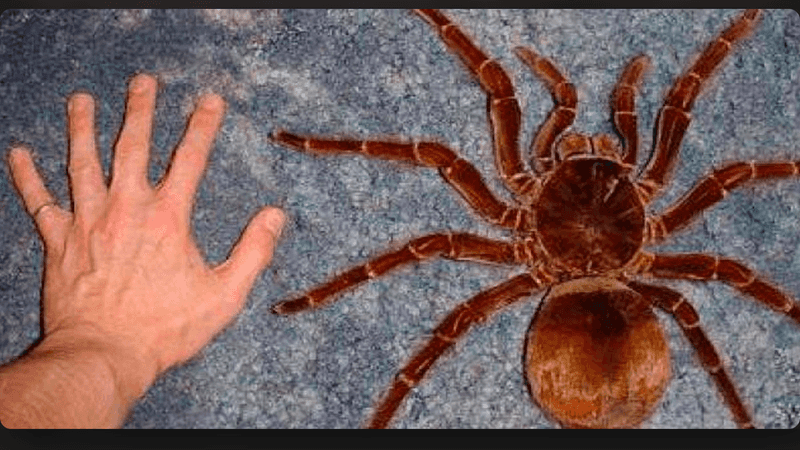
The Goliath Birdeater stands as a giant among spiders, with a leg span reaching up to 12 inches. This impressive size allows it to tower over most other arachnids. Its body alone can be as large as a small child’s hand.
Its substantial weight, comparable to that of a small puppy, adds to its formidable presence. The sheer size of the Goliath Birdeater is not just for show; it plays a critical role in its survival strategy. By being larger, it can intimidate potential predators and capture a wide range of prey.
This spider’s enormity makes it a subject of fascination for both scientists and enthusiasts alike.
Habitat and Distribution
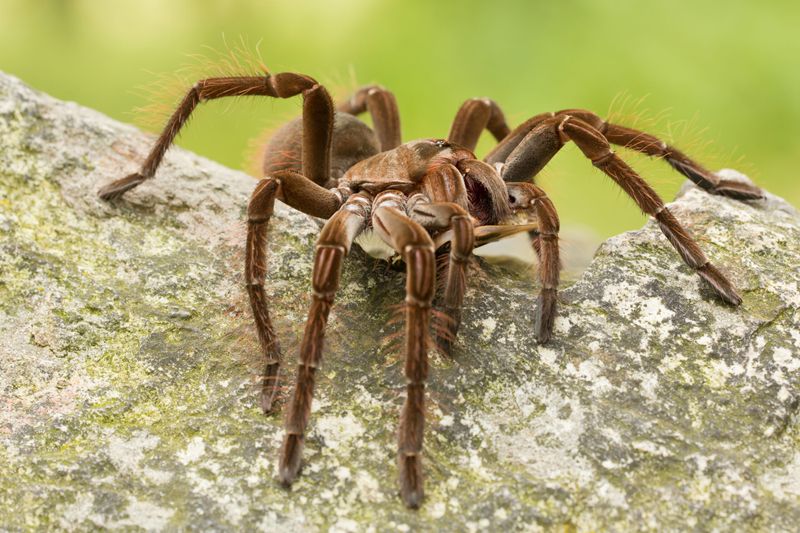
The dense rainforests of northern South America provide the perfect home for the Goliath Birdeater. Venezuela, Brazil, and Guyana are among the countries where this spider thrives.
These lush environments offer ample hiding spots and abundant prey, crucial for the spider’s survival. The Goliath Birdeater often takes residence in burrows, utilizing its powerful fangs to dig into the soft earth.
Its habitat choices are strategic, allowing it to avoid many predators and maintain a stable food supply. The distribution of this spider is closely linked to the availability of suitable environments, making conservation of these areas vital.
Dietary Habits
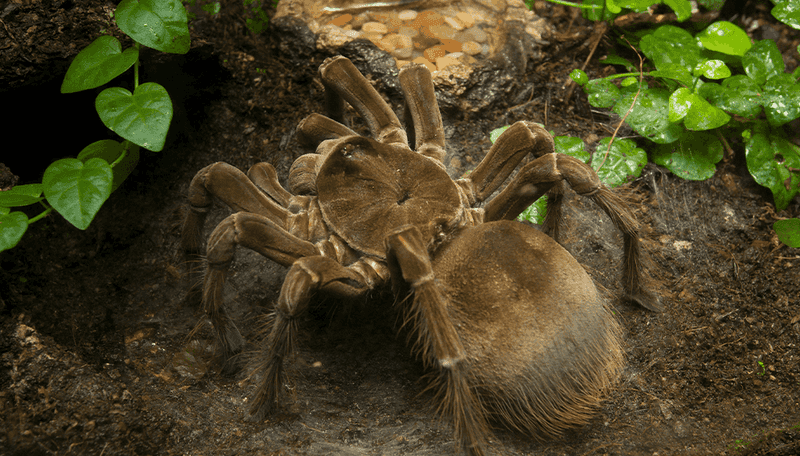
Despite its name, the Goliath Birdeater rarely preys on birds. Its diet primarily consists of insects, worms, and small rodents, all of which it can easily overpower thanks to its size and strength.
This opportunistic feeder utilizes its stealth and speed to ambush unsuspecting prey. Its strong fangs inject venom to subdue its catch, allowing it to consume meals that sustain its large body.
The occasional consumption of small birds happens more by chance than preference. The spider’s name, therefore, reflects rare instances, adding an intriguing layer to its identity.
Reproduction and Lifecycle
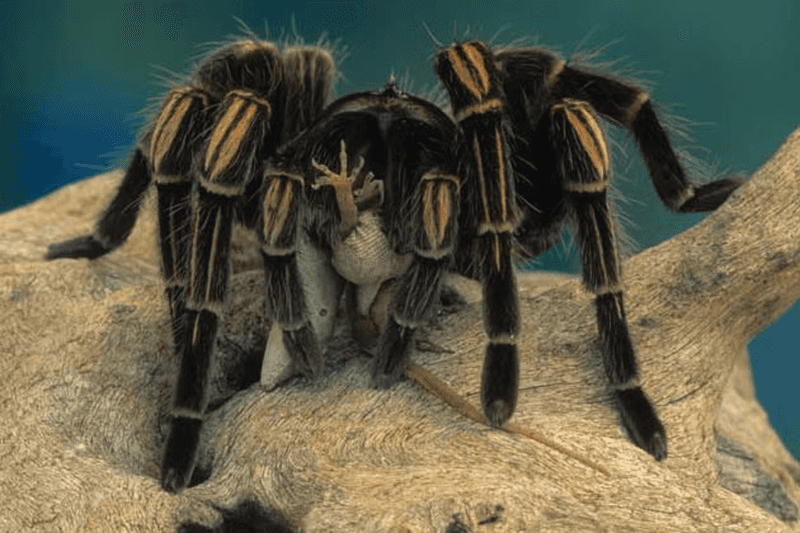
The lifecycle of the Goliath Birdeater begins with the female laying hundreds of eggs in a silk-lined burrow. After about two months, the eggs hatch into spiderlings, which remain in the burrow until they are ready to venture out.
Maturity takes a few years, during which these young spiders face many challenges, including predators and competition for food. Once mature, the male Goliath Birdeater lives a relatively short life, focusing on finding mates.
The female, however, can live up to 25 years, playing a crucial role in the continuation of the species. This extended lifespan is an advantage in the continuity of their kind.
Defensive Behaviors
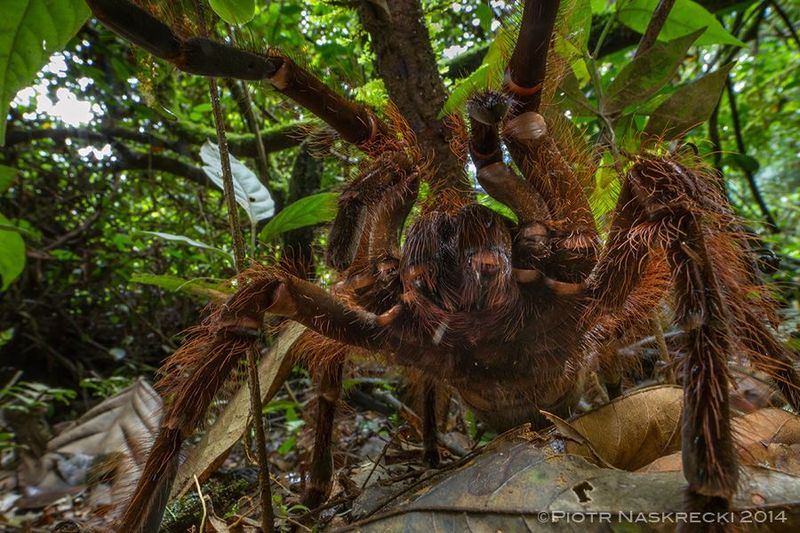
When threatened, the Goliath Birdeater employs a range of defensive tactics. One of its most notable defenses is the ability to rub its back legs against its abdomen to release irritating hairs.
These tiny, barbed hairs can cause discomfort to attackers, especially mammals, making them think twice before continuing their assault. Additionally, the spider may emit a hissing sound by rubbing its legs together, a warning sign to potential threats.
Should these measures fail, the Goliath Birdeater is not above using its massive fangs to bite, although it prefers to avoid confrontation if possible. Its multi-layered defense ensures its survival in the wild.
Unique Sound Production
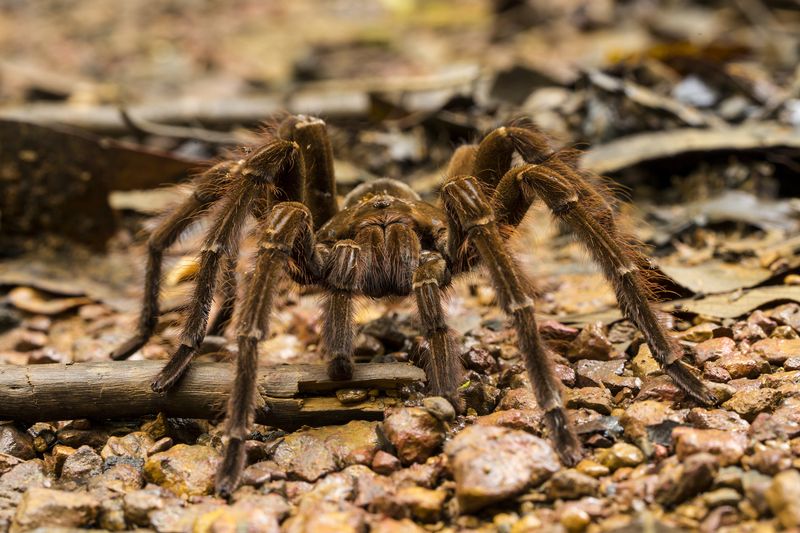
The Goliath Birdeater is unique in its ability to produce sound, a trait not common among spiders. This arachnid can create a hissing noise by rubbing special bristles on its legs together.
This sound serves as an audible deterrent to predators, signaling that the spider is ready to defend itself. The hiss can be quite startling and is often enough to discourage potential threats.
In addition to its defensive function, this sound production adds to the spider’s mystique, showcasing an adaptation that blends physical prowess with audio warnings. It’s a fascinating aspect that highlights the spider’s complex nature.
Molting Process
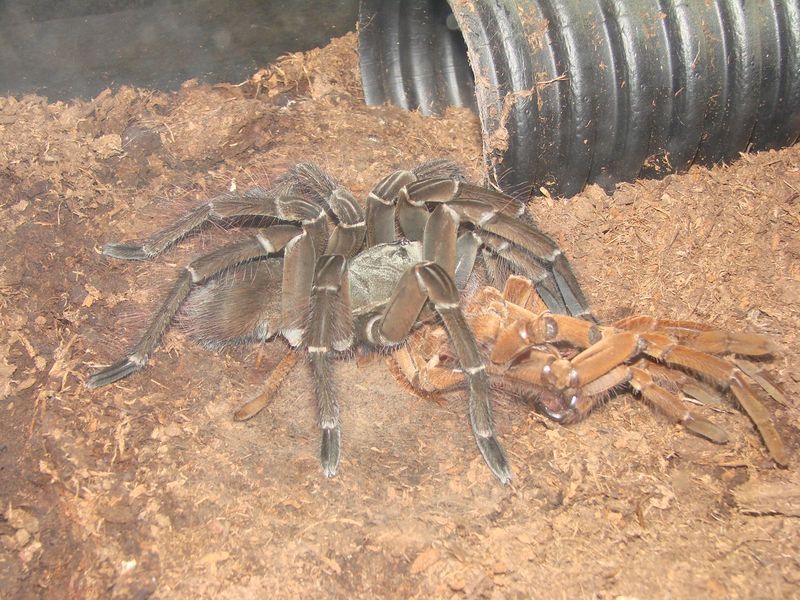
Molting is a critical process in the life of the Goliath Birdeater, allowing it to grow and regenerate lost limbs. During molting, the spider sheds its old exoskeleton, emerging larger and sometimes with new body parts.
This process can take several hours and leaves the spider vulnerable to predators. Therefore, it often seeks a safe place to undergo this transformation.
The frequency of molting decreases as the spider ages, but each molt is essential for its development. This natural renewal process is both a survival mechanism and a testament to the spider’s resilience and adaptability.
Venom and Bite
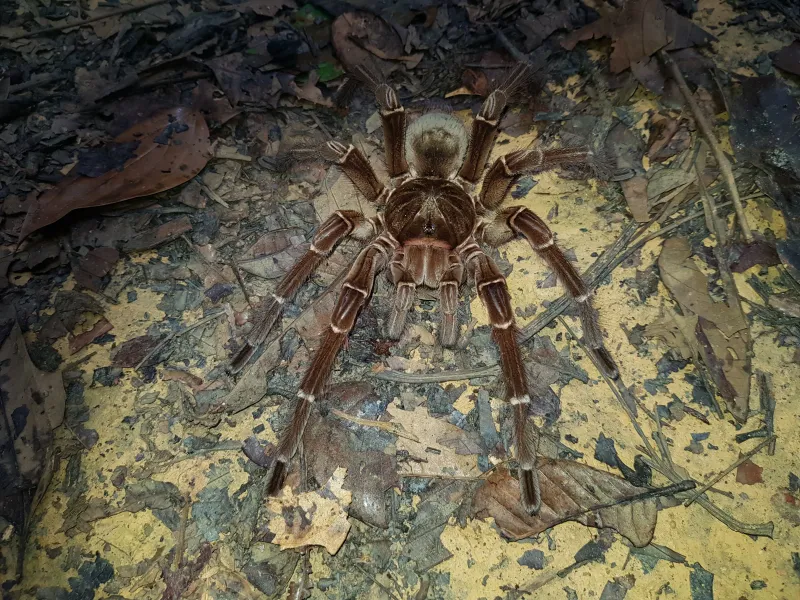
The Goliath Birdeater’s bite is often feared, but its venom is not deadly to humans. Its fangs, however, can cause significant pain and discomfort due to their large size and the mechanical damage they inflict.
The venom is used primarily to subdue prey, such as insects and small mammals, playing a vital role in its hunting strategy. Despite the intimidating appearance, the Goliath Birdeater tends to avoid biting unless provoked.
For those encountering this spider in the wild, understanding its behavior and respecting its space can prevent unwanted interactions. Its venom is a tool for survival rather than aggression.
Relationship with Humans
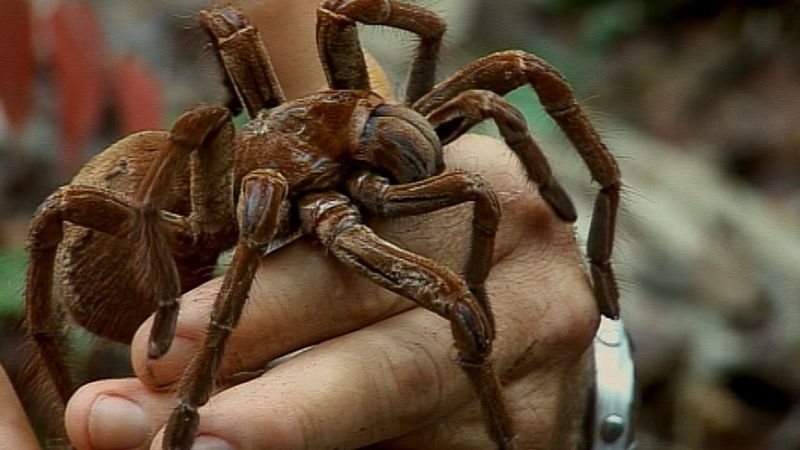
The relationship between humans and the Goliath Birdeater is one of fascination and caution. This spider is often kept in captivity for scientific research or as an exotic pet.
In the wild, encounters with humans are rare, as the spider prefers to stay hidden. However, its immense size and unique features make it a popular subject for documentaries and exhibitions.
While its fearsome appearance may intimidate some, understanding and respecting this spider’s role in the ecosystem promotes coexistence. Efforts to protect its natural habitat contribute to the preservation of biodiversity.
Conservation Status
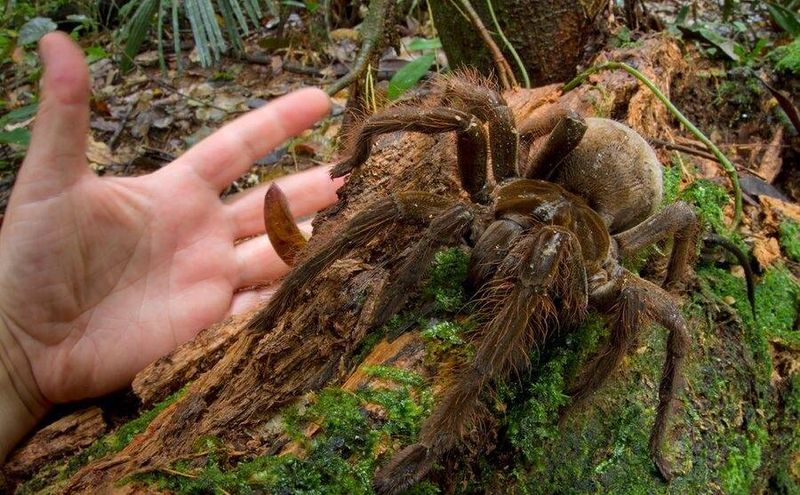
The Goliath Birdeater is not currently listed as endangered, but habitat destruction poses a potential threat to its population. Deforestation in South America impacts many species, including this remarkable spider.
Conservation efforts focus on preserving rainforest habitats, crucial for maintaining the delicate balance of ecosystems. Protecting these areas ensures that the Goliath Birdeater and other native species continue to thrive.
Awareness and education about the importance of these environments play key roles in conservation initiatives. By valuing these habitats, we contribute to the survival of unique creatures like the Goliath Birdeater.

